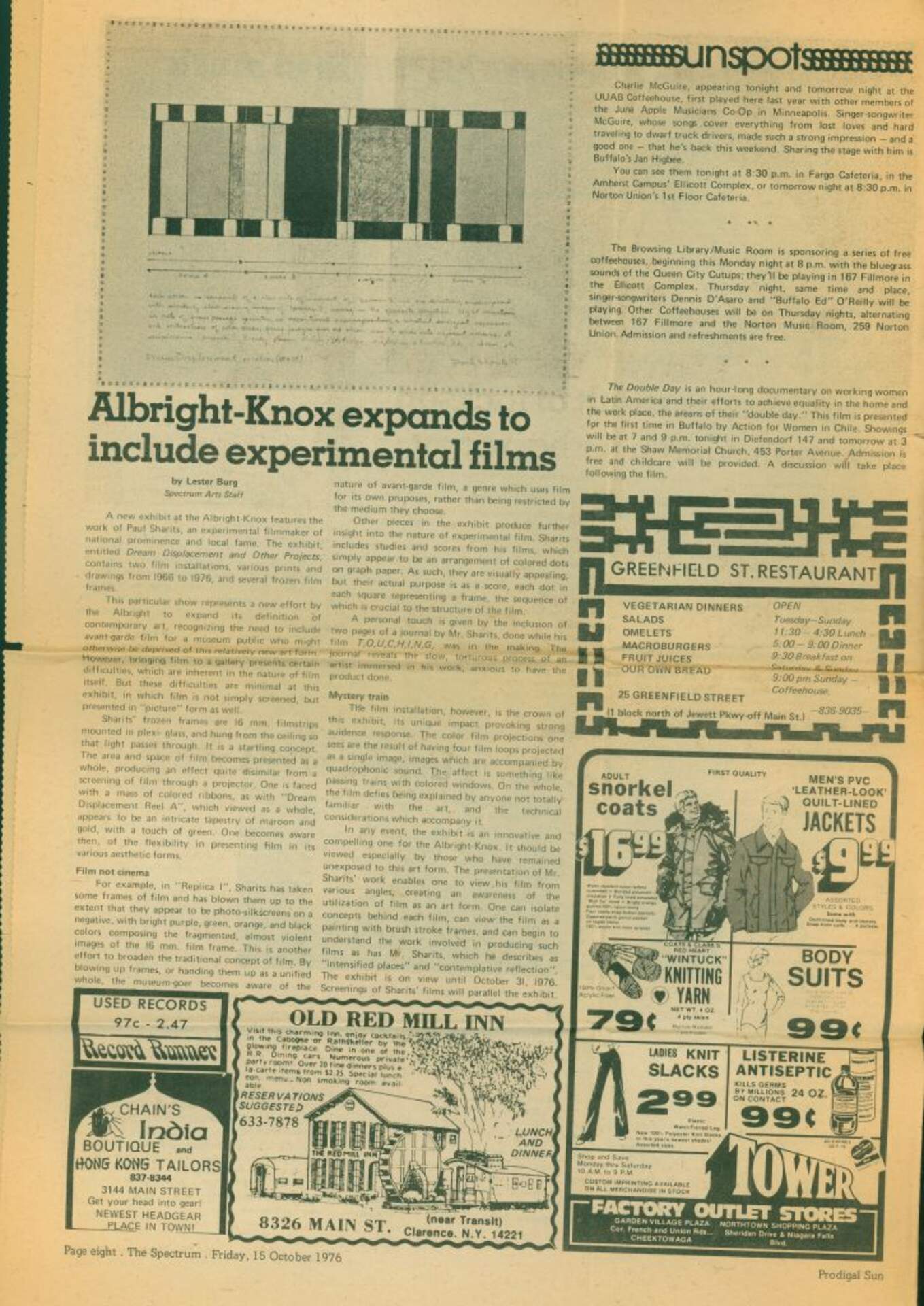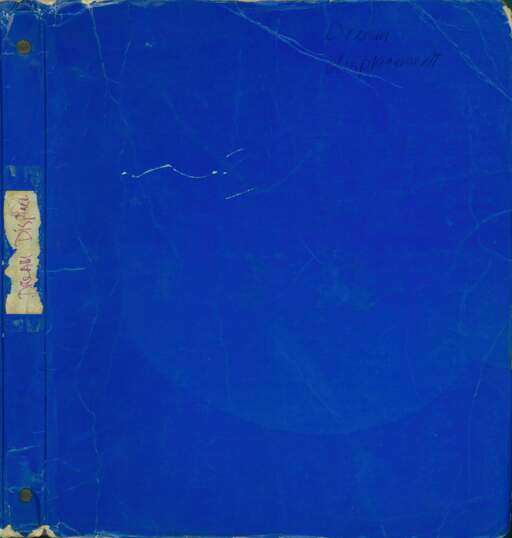Paul Sharits (1943-1993)Alrbright-Knox Expands to Include Experimental Films
typed on newsprint
17 x 11 1/4 inches
Gift of Christopher and Cheri Sharits, 2006
Albright-Knox expands to include experimental films
By Lester Burg
Spectrum Arts Staff
A new exhibit at the Albright-Knox features the work of Paul Sharits, an experimental filmmaker of national prominence and local fame. The exhibit, entitled Dream Displacement and Other Projects, contains two film installations, various prints and drawings from 1966 to 1976, and several frozen film frames.
This particular show represents a new effort by the Albright to expand its definition of contemporary art, recognizing the need to include avant-garde film for a museum public who might otherwise by deprived of this relatively new art form. However, bringing the film to a gallery presents certain difficulties, which are inherent in the nature of film itself. But these difficulties are minimal at this exhibit, in which film is not simply screened, but presented in “picture” form as well.
Sharits’ frozen film frames are 16 mm. filmstrips mounted in plexi-glass, and hung from the veiling so that light passes through. It is a startling concept. The area and space of film becomes presented as a whole, producing an effect quite disimilar from a screening of film through a projector. One is faced with a mass of colored ribbons, as with “Dream Displacement Reel A”, which viewed as a whole, appears to be an intricate tapestry of maroon and gold, with a touch of green. One becomes aware then, of the flexibility in presenting film in its various aesthetic forms.
Film not cinema
For example, in “Replica I”, Sharits has taken some frames of film and has blown them up to the extent that they appear to be photo-silkscreens on a negative, with bright purple, green, orange, and black colors composing the fragmented, almost violent images of the 16 mm. film frame. This is another effort to broaden the traditional concept of film. By blowing up frames, or handing them up as a unified whole, the museum-goer becomes aware of the nature of avant-garde film, a genre which uses film for its own purposes, rather than being restricted by the medium they choose.
Other pieces in the exhibit produce further insight into the nature of experimental film. Sharits includes studies and scores from his films, which simply appear to be an arrangement of colored dots on graph paper. As such, they are visually appealing, but their actual purpose is as a score, each dot in each square representing a frame, the sequence of which is crucial to the structure of the film.
A personal touch is given by the inclusion of two pages of a journal by Mr. Sharits, done while his film T,O,U,C,H,I,N,G, was in the making. The artist immersed in his work, anxious to have the product done.
Mystery train
The film installation, however, is the crown of the exhibit, its unique impact provoking strong audience response. The color film projections one sees are the result of having four film loops projected as a single image, images which are accompanied by quadrophonic sound. The affect is something like passing trains with colored windows. On a whole, the film defies being explained by anyone not totally familiar with the art, and the technical considerations which accompany it.
In any event, the exhibit is an innovative and compelling one for the Albright-Knox. It should be viewed especially by those who have remained unexposed to this art form. The presentation of Mr. Sharits’ work enables one to view his film from various angles, creating an awareness of the utilization of film as an art form. One can isolate concepts behind each film, can view the film as a painting with brush stroke frames, and can being to understand the work involved in producing such films as has Mr. Sharits, which he describes as “intensified places” and “contemplative reflection”. The exhibit is on view until October 31, 1976. Screenings of Sharits’ films will parallel the exhibit.


